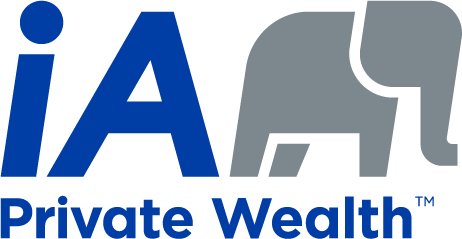Subscribe To Our Newsletter
Subscribe To Our Newsletter
Subscribe to our newsletter and receive free educational articles and videos each month.
Subscribe to our newsletter and receive free educational articles and videos each month.
Main Menu
Financial Foundations: Dividends
Hi! I’m Nick, and welcome to Financial Foundations. I’m going to cover several concepts of investing that may seem confusing and show you that they’re actually simpler than you think. Let’s talk about dividends.
So, what is a dividend? Well, a dividend is a payment of a portion of a company’s profits* to its shareholders. Still confused? Let’s take a look at everyone’s favorite company… Nick Corp! *(Dividends are paid from a company’s retained earnings which is accumulated cash from current and previous year’s profits.)
Let’s say that Nick Corp has 10,000 shareholders and the price of a single share is $100. The market value of Nick Corp would be $1,000,000. We get that figure by multiplying the number of shares by the cost of a share. So 10,000 multiplied by 100 is 1,000,000.
Now let’s say that Nick Corp has a successful year and earns a profit of $100,000. When the shareholders purchased Nick Corp’s stock, Nick Corp’s policy promised to pay out 50% of its yearly profits to each of its shareholders. So, 50% of this year’s profit is $50,000.
Now, Nick Corp evenly divides that $50,000 amongst its 10,000 shareholders. So, each outstanding share receives $5. 50,000 divided by 10,000 is 5. That $5 is what’s known as a dividend.
We can also say that the stocks dividend yield is 5%. We determine the dividend yield by dividing the dividend amount by the current price of a share. So a $5 dividend divided by a $100 share price gives us a 5% dividend yield.
Now, let’s say that a year later Nick Corp’s profits increase to $125,000 and the company continues to pay out 50% of its profits to its shareholders. So, the dividend would increase to $6.25 per share and the dividend yield would increase to 6.25%.
However, as Nick Corp’s profits increase, investors will very likely be willing to pay a higher price for its shares. So, let’s say that Nick Corp’s share price grows to $125. Now, if we divide the dividend of $6.25 by the current share price of $125, the dividend yield is once again 5%.
So, why is this important? Well, history shows that owning dividend paying shares of high quality companies generally results in good investment returns made up of rising dividend payments and rising stock prices.
There you go! You now know what a dividend is. I’m Nick and thanks for joining me on Financial Foundations. I’ll see you next time!
Financial Foundations: Dividends
Hi! I’m Nick, and welcome to Financial Foundations. I’m going to cover several concepts of investing that may seem confusing and show you that they’re actually simpler than you think. Let’s talk about dividends.
So, what is a dividend? Well, a dividend is a payment of a portion of a company’s profits* to its shareholders. Still confused? Let’s take a look at everyone’s favorite company… Nick Corp! *(Dividends are paid from a company’s retained earnings which is accumulated cash from current and previous year’s profits.)
Let’s say that Nick Corp has 10,000 shareholders and the price of a single share is $100. The market value of Nick Corp would be $1,000,000. We get that figure by multiplying the number of shares by the cost of a share. So 10,000 multiplied by 100 is 1,000,000.
Now let’s say that Nick Corp has a successful year and earns a profit of $100,000. When the shareholders purchased Nick Corp’s stock, Nick Corp’s policy promised to pay out 50% of its yearly profits to each of its shareholders. So, 50% of this year’s profit is $50,000.
Now, Nick Corp evenly divides that $50,000 amongst its 10,000 shareholders. So, each outstanding share receives $5. 50,000 divided by 10,000 is 5. That $5 is what’s known as a dividend.
We can also say that the stocks dividend yield is 5%. We determine the dividend yield by dividing the dividend amount by the current price of a share. So a $5 dividend divided by a $100 share price gives us a 5% dividend yield.
Now, let’s say that a year later Nick Corp’s profits increase to $125,000 and the company continues to pay out 50% of its profits to its shareholders. So, the dividend would increase to $6.25 per share and the dividend yield would increase to 6.25%.
However, as Nick Corp’s profits increase, investors will very likely be willing to pay a higher price for its shares. So, let’s say that Nick Corp’s share price grows to $125. Now, if we divide the dividend of $6.25 by the current share price of $125, the dividend yield is once again 5%.
So, why is this important? Well, history shows that owning dividend paying shares of high quality companies generally results in good investment returns made up of rising dividend payments and rising stock prices.
There you go! You now know what a dividend is. I’m Nick and thanks for joining me on Financial Foundations. I’ll see you next time!

